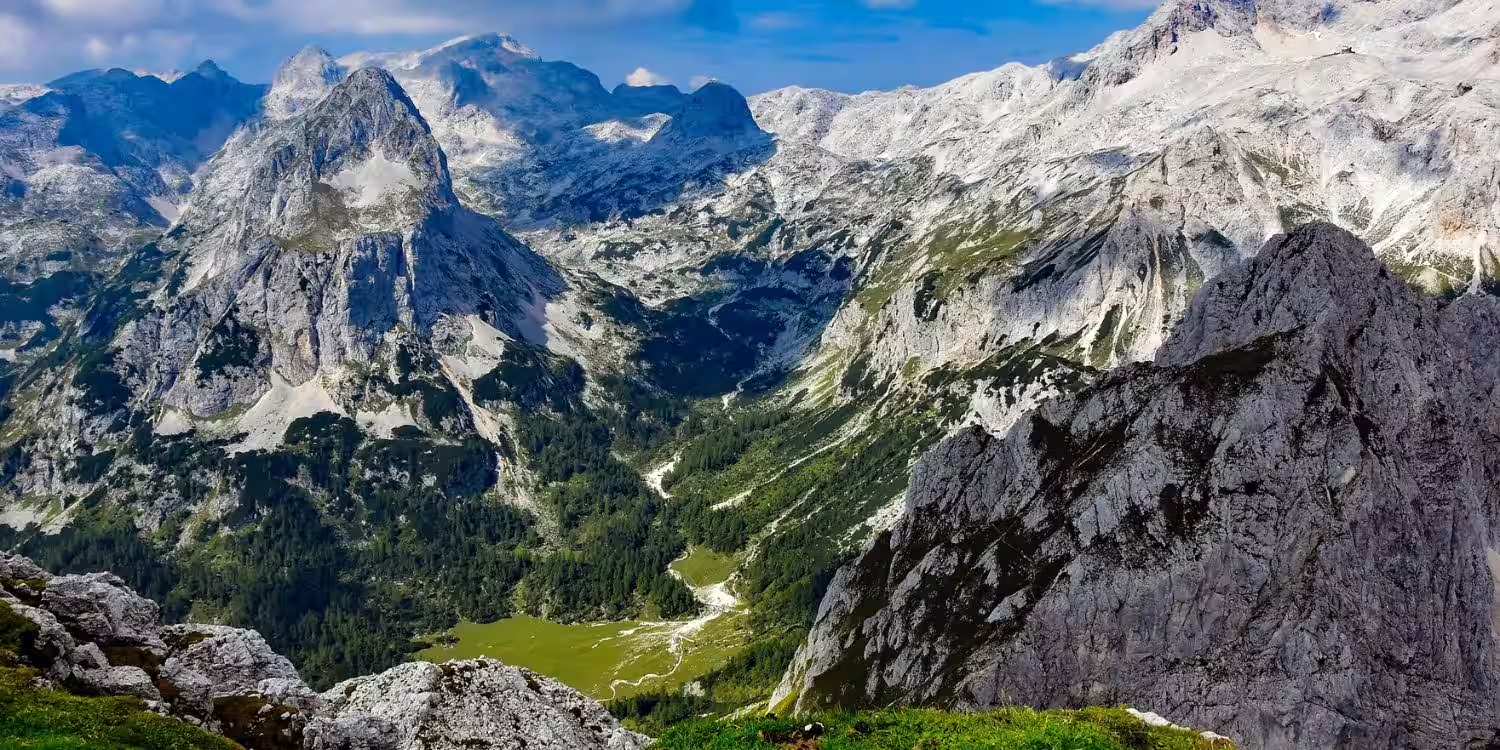
15 Feb How the Alps Shaped the Soča Valley, part 2
Once upon a time the Alps were twice as high as today. Mountains were rising 6.000 meters upon the wild landscape. But what has happened that the entire mountain range then lost almost half of its height? And where the hell has all that material disappeared?
Limestone is a fragile material. To be honest, fish bones and shrimp carapaces are not exactly some solid volcanic rock. And, if we add an extreme weather forecast for another millennium, good old gravity and few violent earthquakes, we get … landslides.
Sediment layers collapse with turbulent force to the valley and on their way smash whatever they meet. River of rocks, mud, pebbles and sand brings to the valley tons of material.
LANDSLIDES
This is the formula by which the Alps are losing their height even today. Landslides are common in the Soča valley as well.
In November 2000, after few days of heavy rain, a landslide was triggered on the slope of Mangart mountain and devastated the village of Log pod Mangartom. Million cubic meters of material (mud, rocks and tree trunks) terribly destroyed this part of our valley. An avalanche can be seen if you drive along the road towards the pass Predil from the bridge just before a part of the road turns to mount Mangart.
From all this material deposited in the valleys by landslides Alpine hills were formed. Some of it was also washed away by the rivers to the sea. And, if all this material was put together again the Alps would be as high as the Himalayas.
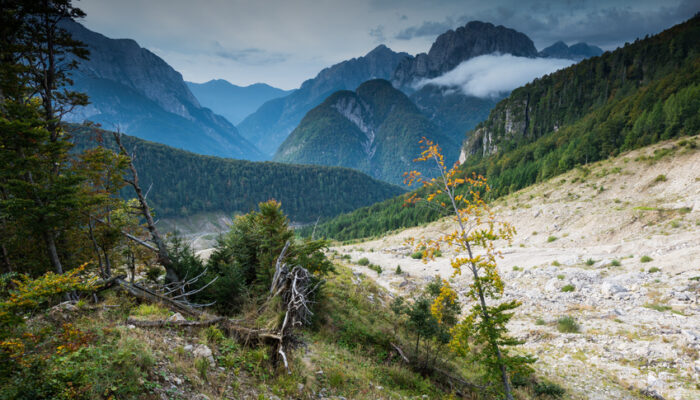
GLACIERS
Something else also happen in the history of the Alps that had a strong impact on their height. This time, the party was organized by the Earth. Our planet has a rather annoying habit that during the rotation its axis is moved once in a while. This phenomenon wouldn’t be such a problem, if this axis shift didn’t cause an ice age. Glaciation is indeed one noxious thing. If you are not Yeti.
That’s exactly what happened two million years ago. On that fateful Pleistocene day it started to snow. A lot. And, it did not stop. Soon one third of Europe was locked in an ice tomb.
The Alps again submerged. But instead of going back to the bottom of a warm tropical sea, and wait for retirement, they sank in an ocean of ice. Well, to be accurate – more than a thousand glaciers, which have paved their way through the mountains.
The temperature dropped to -50 degrees Celsius, a layer of ice was in some areas as high as 3,000 meters. That’s 3 kilometers! The tops of mountains were like islands sticking out of the Arctic Ocean.
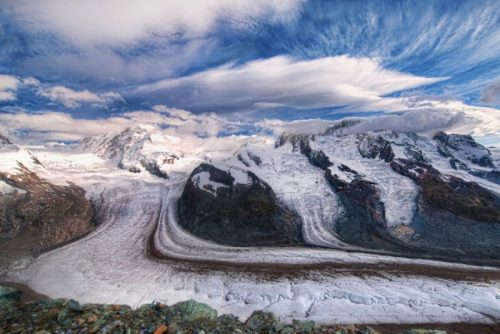
GLACIAL BLOCKS
Although glaciers are solid they still move due to gravity. Kind of like warm polenta. And, on their way they were breaking huge stone blocks and transported them as on a conveyor belt. Then, left them somewhere along the way.
In the Soča valley such huge stone structures called boulders can be found in the most unusual places. You can see the biggest ones if you take the road towards the Trenta valley. Just where the part of the road is covered by rockfall gallery Berebica. There you can find two impressive boulders on the opposite bank of the Soča River. Those boulders are now especially prized by climbers who love to climb them.
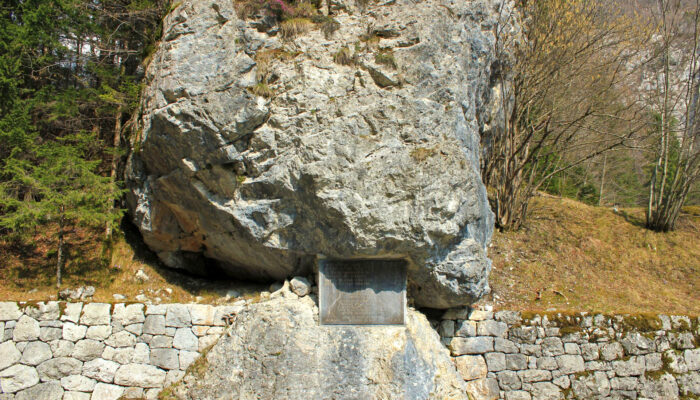
ALPINE RIVER VALLEYS
The ways of the glaciers can also still be seen. These are our valleys. Today, in their place the rivers flow. Glaciers routes have become the valleys of the Soča, Koritnica, Lepenjca, Možnica and Bavšica Rivers.
Among them, of course, the most beautiful Soča, which is home to our fleet. If you go with us on the rafting trip you can admire the valley from the water.
Not much is left of the majority of Alpine glaciers now. We are all aware of the fact that the glaciers are melting. And we also know that we are partly responsible. And if we don’t do something about it this won’t end up good. Glaciers are our main source of fresh water.
But on the other hand it is also true that glaciers have melted even before man started polluting atmosphere with greenhouse gases.
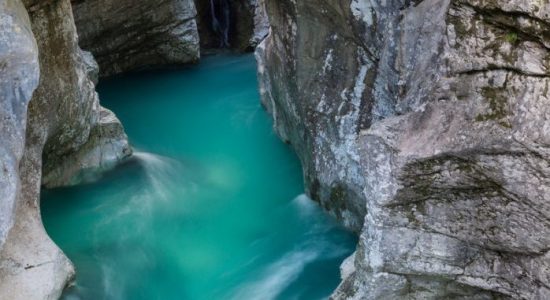
HANNIBAL BOAT OF CARTHAGE
Living proof of this is the most badass human achievement in the history of the Alps. No, not just the Alps. All mountain ranges that ever shaped the image of the world.
We are talking about Hannibal’s expedition across the French Alps with elephants. Hannibal (Hannibal Barca of Chartage and not Hannibal Cannibal, to make no mistake) was from Carthage (present day Tunisia) and in accordance with the ancient tradition of his nation he hated Romans to death.
Before his birth the two nations had an “I’m taking this away from you ‘cuz I’m sooooo cool and you’re just some barbarian” disagreement over the island of Sicily. It was mainly about who will be the general manager of the Mediterranean.
Then the Romans also swiped the islands of Corsica and Sardinia from Chartage. The Chartagians of course went ballistic and occupied Spain. From there Hannibal started planning a revenge for all the humiliations.
And indeed Hannibal has picked up his army including 36 elephants and marched to Rome. Elephants were in those archaic times, the closest approximation to modern tank and caused many heart failures just with their appearance.
Hannibal has decided to take Rome by land and not by sea. But if a man wants to come to Italy by land, he must cross the Alps. Anyone who was at least pretending to be listening during the hours of geography, knows that.
To cross the Alps on foot is not exactly a piece of cake. And if you pack with you three dozen elephants and book your trip for November you are mature for admission into one of the mental health clinics. Chances of making it alive to the other side are negligible. Close to zero.
Actually, it is as if you would drive to the bank, rise all your family savings, buy a plane ticket, fly to Las Vegas, show up in the first casino you meet and bet all your money on red.
But Hannibal woke up in a good mood that cold November day, collected 100,000 of his soldiers, drank espresso, did some stretching and then pointed his finger towards the Alps: “C’mon guys it’s just a rock …” Then he used some juicy language to describe his emotions on the offspring of Romulus and Remus, and what fate awaits them. His speech was loudly applauded by his soldiers.
Hannibal’s army needed 15 days to finally descend into the valley of Apennine Peninsula. In few battles they significantly reduced the number of Roman legionaries and even managed to eliminate a Roman consul.
But before the events went from bad to really bad the Romans organized themselves and put things back in their place. They erased Carthage from the map of the world, learned how to cook pasta al dente and started playing bricsola.
Nevertheless Hanibal’s name is still to be found in all the literature associated with the Alps, thanks to his bold achievement. But the experts agree that today the path that army took through the Alps is completely frozen and impassable. Obviously Hannibal was crossing the Alps during a short warming.
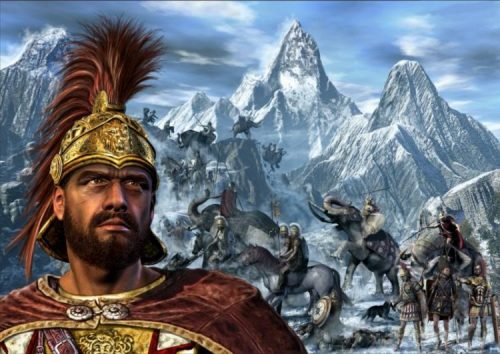
But the Alps are still not easygoing. They are still losing their heights and it seems that one day they will be gone. How will the world look like on that day we can only speculate. Perhaps we might get a tropical climate back.
What is the force that now makes sure something is happening in the mountains all the time? And why mountain ranges are still losing height, if the glaciers are almost gone?